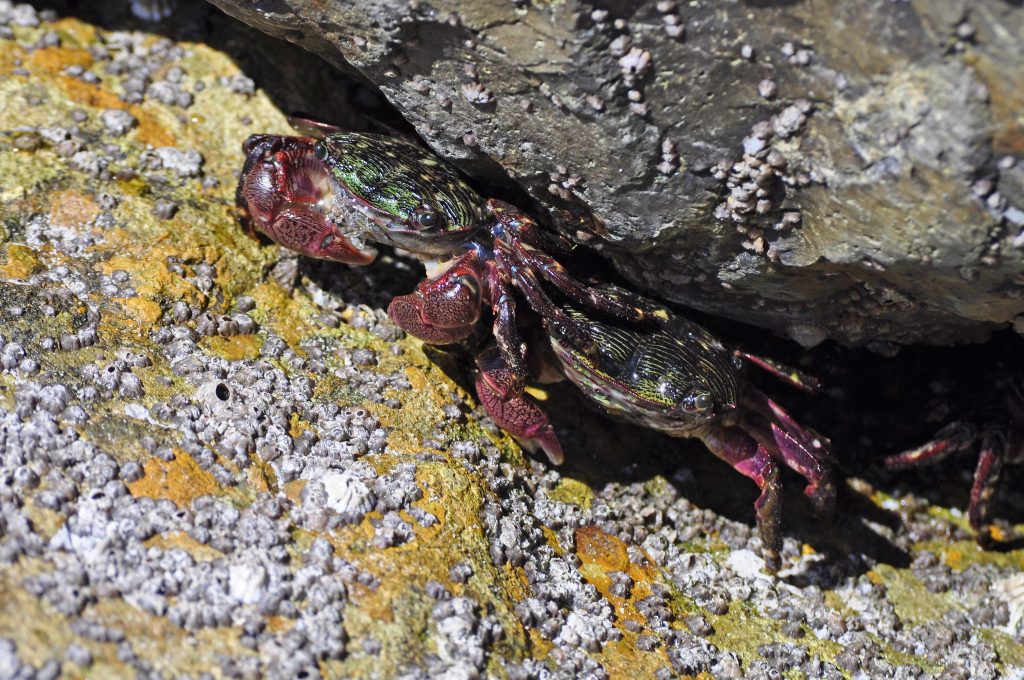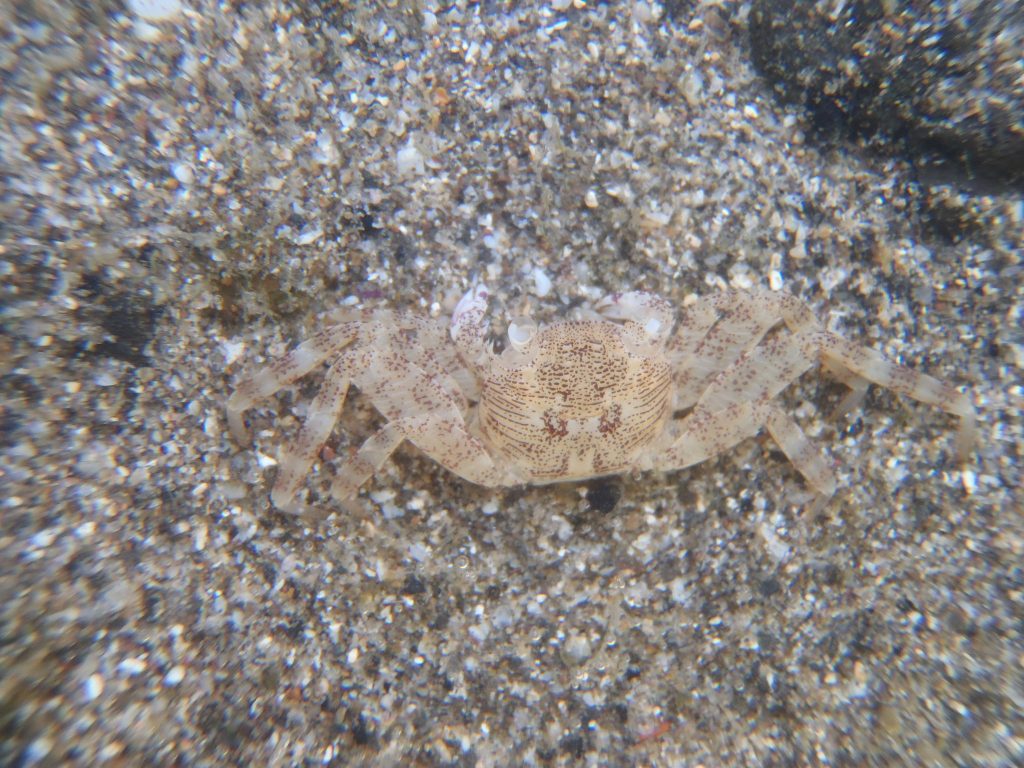Striped shore crab identification and habitat
What striped shore crabs look like
The striped shore crab is a type of crustacean, about one to two inches (or 3 to 5 centimeters) wide. Their carapace (i.e. hard, upper shell) is a very dark purple, red, or even green, and lined with bright yellow-green stripes. Though this color combination makes striped shore crabs eye catching when you see them out in the open, it helps them disappear into dark, rocky crevices where they hide amongst sea lettuce, rock weed, and bits of kelp. Its pincers, also known as chelae, are often a deep red. Male striped shore crabs are slightly larger than the females.

Where to find striped shore crabs
Striped shore crabs live all along the West Coast of North America, from Baja California, Mexico, in the south, to Vancouver Island, Canada, in the north. If you look carefully, you can find striped shore crabs in estuaries, tidepools, mussel beds, in the burrows they sometimes dig into sandy banks, or scuttling along shoreline rocks.
The variety of habitats they exist in mirrors the variety of foods they’ll eat. Though they feed mostly on green and red algae and diatoms (a kind of phytoplankton) growing on the water or rocks around them, they are opportunistic and will also eat animals including dead fish, limpets, snails, isopods, worms, and mussels.
See a striped shore crab eat
Striped shore crabs like the one in this video, filmed in the Morro Bay estuary, often tear and pick up algae or other food substances with both chelae. They bring the food to their mouths rhythmically, eating alternately from the left and right pincers.
Interesting facts about striped shore crabs
- Though most crabs and many shore crabs spend the majority of of their time underwater, the striped shore crab is an exception. They spend 50% or more of their time on land, though they typically stay close to the water’s edge.
- Lined shore crabs mate between April and September every year. A single female may produce as many as 50,000 eggs, and, once they are fertilized, she will carry them under her abdomen as they develop.
- Like many crabs, striped shore crabs molt, meaning that they shed their hard shells as they grow too large for them. When they shed, they do so through a small slit at the back of the shell, leaving the molted shell pretty much intact. After they molt, the new exposed shell is soft and hardens over time. One striped shore crab may cannibalize a fellow striped shore crab while the second crab’s shell is still soft after molting.
-

Though this may look like a very pale or dead striped shore crab, it is actually a molted shell. Photograph by Don Ehlen, shared via Flickr under Creative Commons License.
How to protect striped shore crabs
Help protect and restore the Morro Bay estuary
- Donate to the Estuary Program and support our work in the field, the lab, and beyond.
The Estuary Program is a 501(c)3 nonprofit. We depend on funding from grants and generous donors to continue our work. - Support us by purchasing estuary-themed gear from ESTERO. This locally owned and operated company donates 20% of proceeds from its Estuary clothing line and 100% of Estuary decal proceeds to the Estuary Program. Thank you, ESTERO! You can find ESTERO hoodies, shirts, hats, decals, and more online at esterosurf.com or at Joe’s Surfboard Shop in Morro Bay.
- Purchase items from the the Estuary Program’s store on Zazzle. Zazzle prints and ships your items, and the Estuary Program receives 10% of the proceeds. Choose from mugs, hats, t-shirts, and even fanny packs (they’re back!) with our fun Estuary Octopus design or our Mutts for the Bay logo.